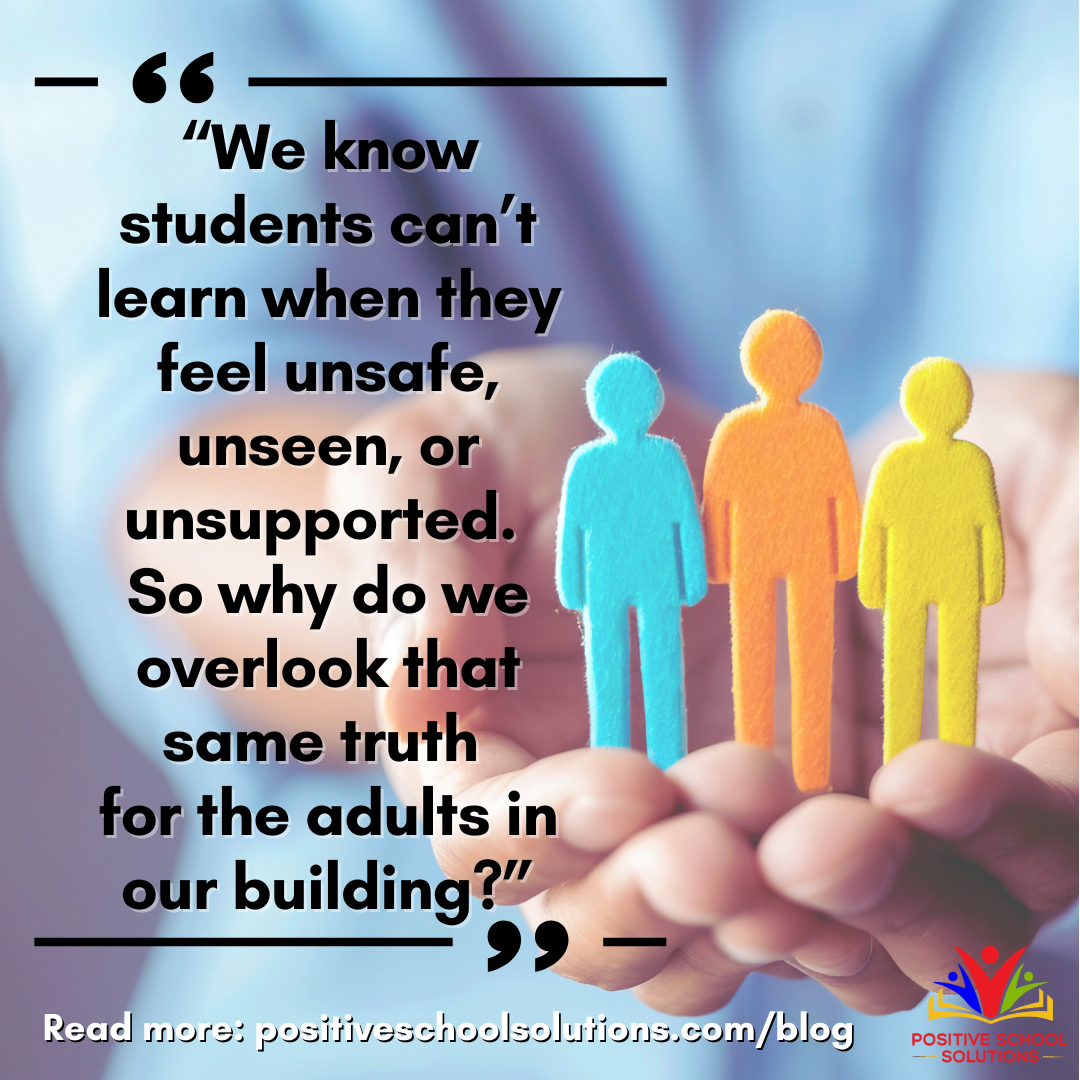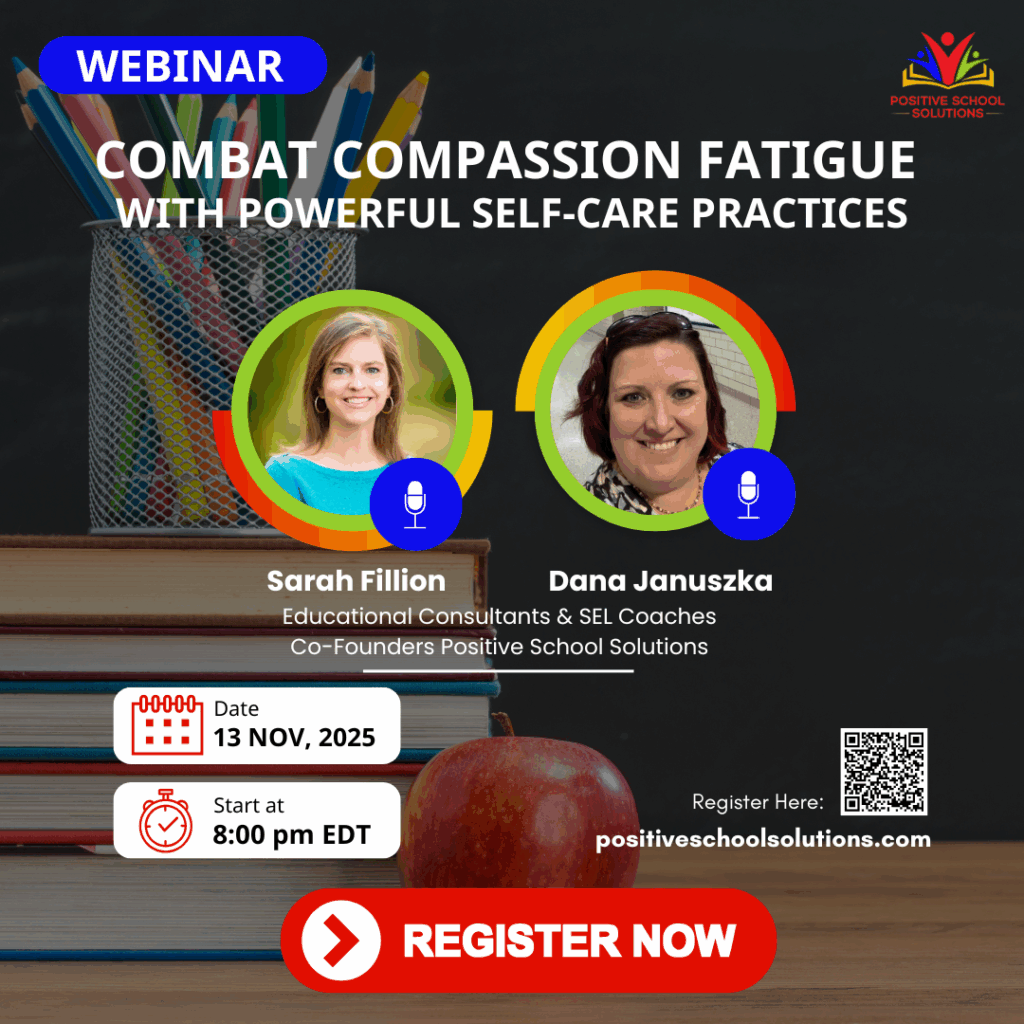“You can’t pour from an empty cup.”
We say it all the time. But do our professional development systems actually believe it?
Recently, I was speaking with the superintendent of a large urban district who put it bluntly:
“We can’t keep asking teachers to give their best to students when they’re barely holding themselves together.”
He’s right.
We wouldn’t ask students to perform well academically when their basic needs aren’t being met—and yet we do exactly that with teachers every single day.
And here’s the truth: If we’re serious about academic success, we have to get serious about staff well-being. Not after test scores rise. Not after behavior improves. But first.

Why Student Success Starts with Staff Well-Being
We know students can’t learn when they feel unsafe, unseen, or unsupported. So why do we overlook that same truth for the adults in our building?
We hand teachers a new behavior system, a new curriculum, a new coaching cycle… but their internal monologue sounds more like this, “I just need a minute. I haven’t peed all day. I haven’t had a real conversation in a week. I want to be here, but I feel like I’m drowning.”
When teachers are overwhelmed, they’re in survival mode. And people in survival mode aren’t open to growth. They can’t reflect. They can’t regulate student emotions when their own are in a tailspin. They can’t access their creativity or their joy—two things that fuel great teaching.
And, to be honest: even when they do take a day off, it’s usually packed with dentist appointments, car repairs, and grocery runs. That’s not restoration. That’s just catch-up.
Well-Being Isn’t a Buzzword—It’s a Prerequisite
This is why, at Positive School Solutions, we don’t treat well-being as a warm-and-fuzzy extra.
We treat it as a prerequisite for every other goal schools care about: engagement, behavior, and achievement.
Our definition of self-care goes beyond bubble baths and yoga sessions. We focus on self-connection—helping educators identify and do the small, personal, daily actions that make them feel more like themselves. That might mean mopping the floor while listening to music. Or taking a nap. Or getting outside for ten quiet minutes before dinner. The right self-care leaves you feeling more energized—not just numbed out. That’s self-connection.
And when teachers build that into their routine? Everything changes. They stop reacting and start responding. They stop running on empty and start experiencing days that actually restore them.
The Solution: Start the Year with Teacher Well-Being
Instead of cramming the first weeks of school with initiatives and data dives, imagine this… You gather your team and say:
“You work so hard to make sure your students feel ready to learn. This year, we’re doing the same for you. Before we ask anything of you, we’re starting with something for you.”
That’s the shift Holistic PD makes.
That’s what our Lesson Plan for Life experience delivers—one of the three essential pillars of Holistic PD, alongside skill-building and culture-shaping leadership. It’s where we begin, because well-being must come first before anything else can flourish.
What is Lesson Plan for Life?
It’s a 6-week, research-backed experience that helps educators reconnect with themselves—and equips them with the emotional stamina to handle whatever school throws at them.
- One short, on-demand masterclass per week
- Daily 10-minute tasks that support joy, mindset, and routines
- Motivational nudges, toolkits, and community check-ins
- Zero fluff, all purpose
We don’t add more to teachers’ plates—we help them rebuild the plate so it can hold everything else more effectively.
And the impact lasts far beyond the 6 weeks. Participants continue receiving:
- Weekly emails for 2 months (to keep the shift going)
- Monthly reflection emails for the remainder of the year
- On-demand replays of every session
- The encouragement of knowing their whole staff is making the shift together
Because When Staff Thrive, Students Rise
We’ve seen it again and again. When teachers feel connected, rested, and whole, they show up differently. They lead with calm. They bounce back quicker. They make lessons more engaging, even when the content is dry. They respond to misbehavior with curiosity instead of frustration.
It’s not rocket science—it’s human science.
And it’s time to treat well-being like the foundation it is.
If this resonates, if you’re nodding along, if you feel this in your gut—then you’re the kind of leader we’re here to support.
Reach out.
Let’s create a staff culture where well-being isn’t just encouraged, it’s embedded.
Where growth doesn’t cost joy—and where everyone, including you, feels a little more whole each day.
Let’s build schools where students succeed because the staff is thriving.
Written by Sarah Fillion 2025

